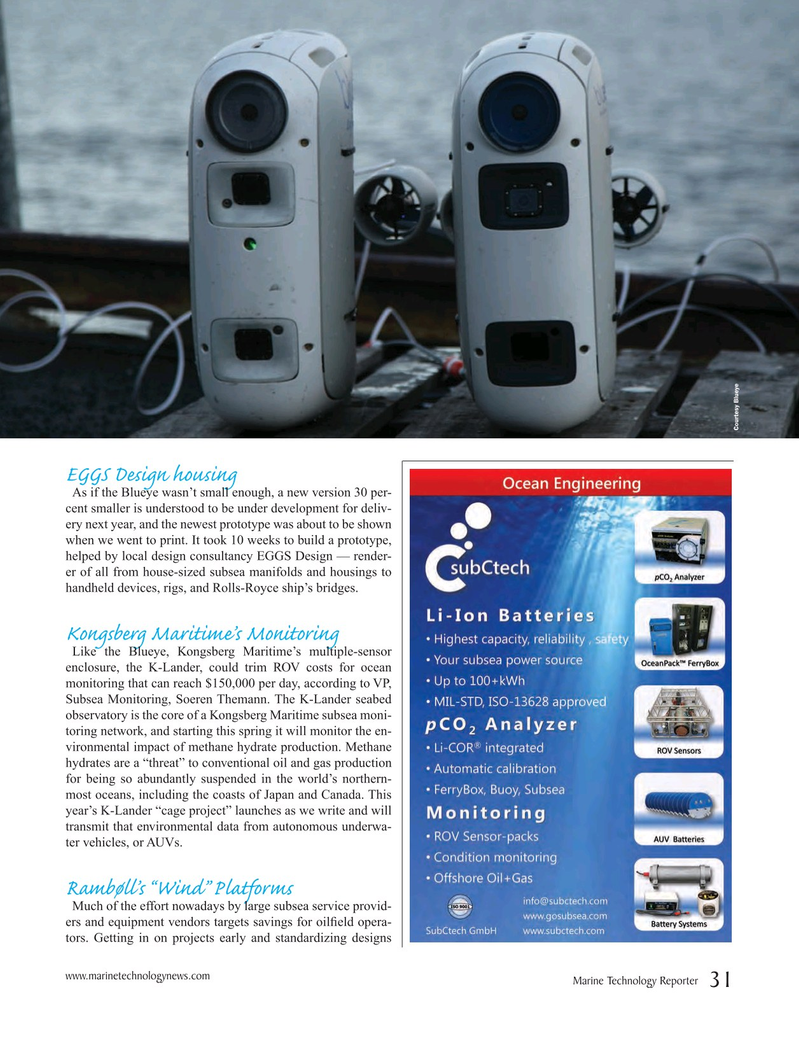
Page 31: of Marine Technology Magazine (May 2016)
Underwater Defense
Read this page in Pdf, Flash or Html5 edition of May 2016 Marine Technology Magazine
Courtesy Blueye
EGGS Design housing
As if the Blueye wasn’t small enough, a new version 30 per- cent smaller is understood to be under development for deliv- ery next year, and the newest prototype was about to be shown when we went to print. It took 10 weeks to build a prototype, helped by local design consultancy EGGS Design — render- er of all from house-sized subsea manifolds and housings to handheld devices, rigs, and Rolls-Royce ship’s bridges.
Kongsberg Maritime’s Monitoring
Like the Blueye, Kongsberg Maritime’s multiple-sensor enclosure, the K-Lander, could trim ROV costs for ocean monitoring that can reach $150,000 per day, according to VP,
Subsea Monitoring, Soeren Themann. The K-Lander seabed observatory is the core of a Kongsberg Maritime subsea moni- toring network, and starting this spring it will monitor the en- vironmental impact of methane hydrate production. Methane hydrates are a “threat” to conventional oil and gas production for being so abundantly suspended in the world’s northern- most oceans, including the coasts of Japan and Canada. This year’s K-Lander “cage project” launches as we write and will transmit that environmental data from autonomous underwa- ter vehicles, or AUVs.
Rambøll’s “Wind” Platforms
Much of the effort nowadays by large subsea service provid- ers and equipment vendors targets savings for oil? eld opera- tors. Getting in on projects early and standardizing designs www.marinetechnologynews.com
Marine Technology Reporter 31
MTR #4 (18-33).indd 31 4/25/2016 10:38:18 AM

 30
30

 32
32
